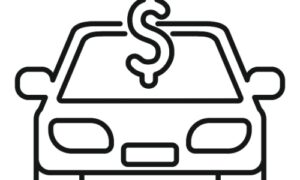A Current Events-Minded View of Vehicle Affordability
It’s encouraging to see some OEMs reduce MSRPs on incoming 2025 models to help address one of our industry’s top challenges—with an average transaction price for a new vehicle north of $47,000, it’s difficult for a large swath of would-be buyers to afford a new vehicle.
But analysts and observers don’t think the MSRP reductions  will have a significant impact on the affordability challenge, especially as they expect OEMs to diminish incentive spending in kind. This fall, incentive spending has averaged more than 7 percent of transaction prices (about $3,500) in recent weeks. At the same time in 2019, incentives were running nearly 10 percent of transaction prices.
will have a significant impact on the affordability challenge, especially as they expect OEMs to diminish incentive spending in kind. This fall, incentive spending has averaged more than 7 percent of transaction prices (about $3,500) in recent weeks. At the same time in 2019, incentives were running nearly 10 percent of transaction prices.
“I’d expect to see incentives to remain high on 2024 models as OEMs help dealers clear the inventory,” a new vehicle analyst shared. “But we’ll probably start the new year with lower levels of incentive spending than we’ve seen lately.”
Such dynamics mean the average transaction price for buyers will effectively remain the same—and the pressure on dealers to move aging or excess new vehicle inventory will continue.
Meanwhile, the Federal Reserve’s decision last week to cut interest rates by another quarter percent is also expected to ease the affordability challenge. But the impact will take time. So far, we haven’t seen auto loan rates shift significantly from the Fed’s rate-cutting this fall. The big question is whether the Fed will continue down this rate-cutting path to provide more tangible relief.
Therein lies a big unknown. At the Fed’s meeting last week, chairman Jerome Powell noted that with a new president and Congress taking office in January, it’s difficult to chart a course forward.
“We don’t guess, we don’t speculate and we don’t assume,” Powell said. “We don’t know what the timing and substance of any policy changes will be. We therefore don’t know what the effects on the economy will be.”
Some of the uncertainty owes to a promise President-elect Donald Trump made on the campaign trail to increase tariffs on imports to spur domestic manufacturing, a policy that many believe would lead to higher vehicle costs. There’s also uncertainty around how President-elect Trump will treat current tax credits for EV purchases, which has helped spur demand and sales for dealers, particularly with used EVs.
In the end, time will tell whether we see vehicle affordability improve and become less of a headwind for vehicle sales than it is today. In the meantime, it’ll be important for dealers to do what you do best—stay attuned to your market, your inventory and your customers to capitalize on the opportunities that will inevitably arise on the road ahead.
The post A Current Events-Minded View of Vehicle Affordability appeared first on Dale Pollak.








